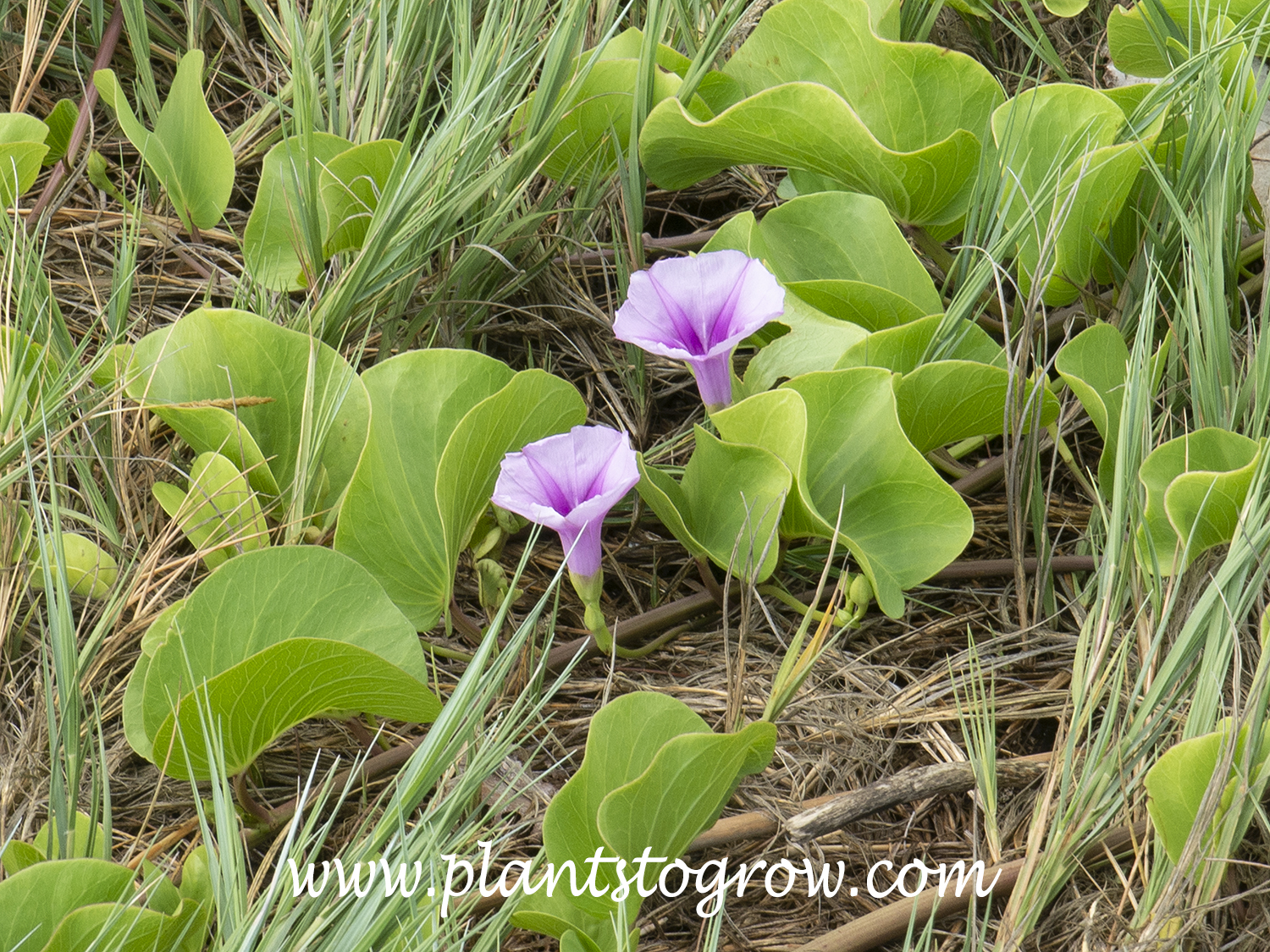| Description | Beach Morning Glory (Ipomoea pes-caprae brasiliensis) is a creeping vine found on beaches throughout the tropical and subtropical regions of the world. It has spread through the process of seed drifted seeds. It is tolerant of salt spray, heat, drought, and wind. |
|---|---|
| Plant Type | Broadleaf evergreen, woody vines |
| Hardiness Zone | 10 |
| Sunlight | full |
| Moisture | average, tolerates drought |
| Soil & Site | sand, sandy beach |
| Flowers | funnel-shaped, pink to pale purple |
| Fruit | black seeds, spread by sea drift |
| Leaves | semi-succulent glaucous, green |
| Stems | creeping stems (prostrate), rooting at nodes |
| Dimensions | listed as 15-60 feet |
| Maintenance | It can be somewhat aggressive in an active growing period. Trim to confine in the growing area. |
| Propagation | stem cuttings, seeds |
| Native Site | found in many tropical areas (pantropical) |
| Misc Facts | The generic name Ipomoea is derived from the Greek ips, worm, and homoios, similar to, meaning worm-like, about the twining habit. The hyphenated specific epithet pes-caprae is from the Latin pes, foot, and caprae, goat, or literally "foot of a goat," in reference to the shape of the leaves similar to that of a goat's foot (hoof). The subspecies brasiliensis is in reference to the country of Brazil (Brasil), part of its pantropic range (Native Plants of Hawaii) |
| Author's Notes | While visiting Oahu, Hawaii I saw this plant growing on many different beaches |
| Notes & Reference | #62-Manual of Climbers and Wall Plants (J K Burras, Mark Griffiths), Native Plants of Hawaii (nativeplants.hawaii.edu/plant/view/Ipomoea_pes-caprae_brasiliensis/) |

Cart






